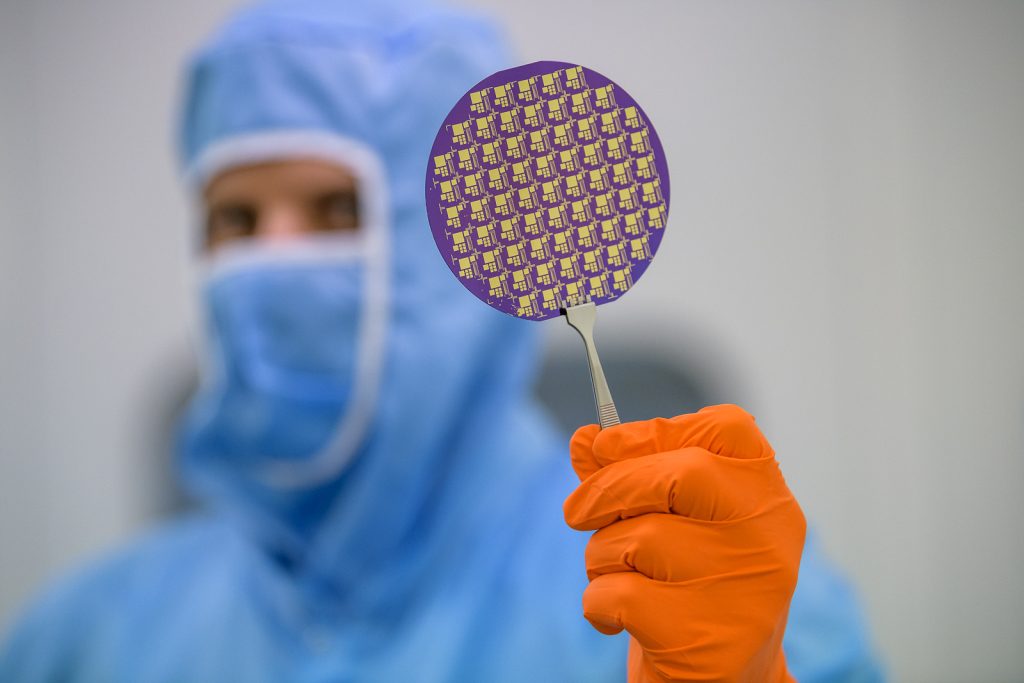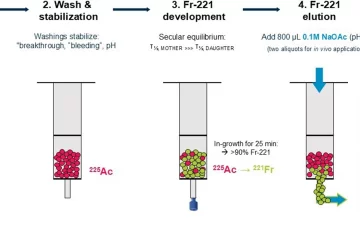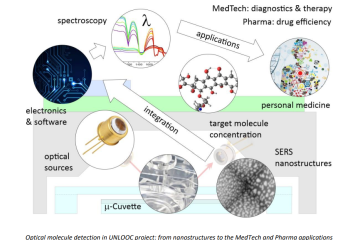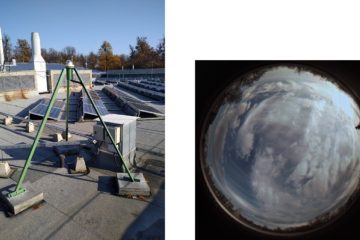Researchers at the Institute of Technical Physics and Materials Science of the HUN-REN Centre for Energy Research (HUN-REN EK-CER) are developing mobile gas detectors, background radiation detectors, and sensors for monitoring vibrations in installations. These new types of low-power mobile and wearable sensors, made using micro- and nanotechnology tools, will help protect critical infrastructure and emergency responders.
Preserving human-made infrastructure and managing emergencies are essential elements of sustainable development. The most effective and economical method of protection is continuous monitoring, as prevention involves significantly lower financial and labour costs than restoration after damage. Key factors in continuous monitoring include low power consumption, small size, and cost-effective manufacturability.

Chips on a silicon wafer, developed by researchers of HUN-REN EK-CER Credit: HUN-REN EK-CER MFA
Researchers at the Institute of Technical Physics and Materials Science at HUN-REN EK-CER have 30 years of experience conducting research in micro-electromechanical (MEMS) systems and functional materials, as well as in applying and developing related materials testing methods. In a project launched in 2022, they are developing new types of economically manufacturable and operable sensors to monitor the condition and environment of industrial facilities and infrastructures critical for the Hungarian economy, and to protect the health and safety of the population and emergency responders in dangerous/risky situation
The Institute of Technical Physics and Materials Science houses Hungary’s only spherical-aberration-corrected, sub-Angstrom (0.1 nanometre) resolution HRTEM facility, which plays a crucial role in the analysis of materials, structures, and sensors under development.
The goal of the project is to develop three families of environmental monitoring sensors, with prototypes completed by early 2024:
- Sensors for vibration monitoring in industrial facilities, implemented using purely hardware-based piezoelectric MEMS chips with low computational requirements and capable of generating frequency spectra, as well as energy-efficient RF communication and networked systems. During development, particular emphasis is given to a so-called event-activated operational mode, which remains in standby under normal conditions but responds quickly to critical signals.
- Mobile gas detectors, which can be used for everyday operational safety in industrial facilities in addition to emergency management. The developments address two operational principles and application areas: a MEMS microheater-based universal platform that can be used to detect toxic gases in the concentration range 1-10 ppm (parts per million) when covered with a suitable sensor thin layer; and wearable systems based on infrared absorption that enable the rapid detection of concentrations of commonly used flammable gases (such as methane) above 1-10% of the explosion threshold concentration.
- Mobile gamma and neutron background radiation detectors, which can be used in monitoring the environment of nuclear facilities (Paks Nuclear Power Plant, Budapest Research Reactor, BME Training Reactor, low and medium level radioactive waste storage facility), and in quickly mapping the domestic effects of nuclear accidents, as well as locating radioactive sources.



